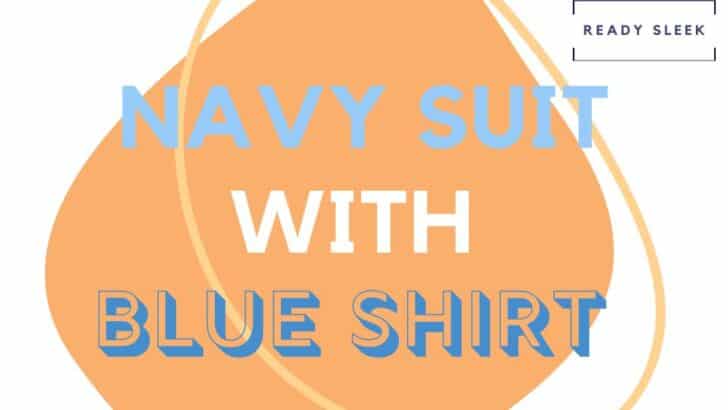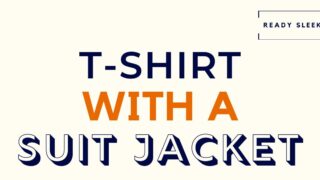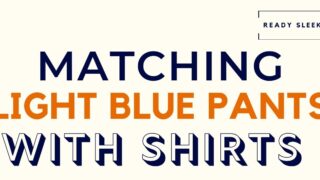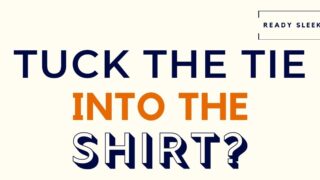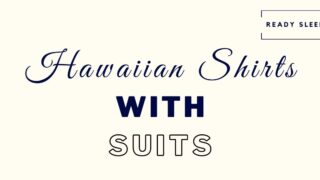Monochromatic combinations need to be worn in the right way and at the right time. The navy suit and blue shirt combo is no exception.
Here’s the bottom line:
A navy suit can be worn with a blue shirt in business-professional and smart-casual settings. Light blue shirts are considered more appropriate in professional environments, as are structured navy suits made from worsted wool. In casual settings, rougher and more rugged fabrics can also be considered.
That’s the short and sweet answer, but you’ll definitely need more.
After going through some essential tips for wearing this combination in the most effective way possible, we’ll run through a couple of FAQs on the topic to really finish up in style.
Let’s get to it.

7 Tips For Wearing A Navy Suit With A Blue Shirt
Consider all of these before putting your outfit together and you’re unlikely to set a single foot wrong.
It Isn’t Always Appropriate
A navy suit and blue shirt pairing should only be worn in business-professional and smart-casual settings.
It shouldn’t be worn in truly “formal” or business-casual settings.
Let me explain.
While a navy suit is dark and neutral enough to work well in truly formal settings, a blue shirt of any shade is unlikely to cut it.
It’ll just look too casual.
While opinions may vary on this subject, a “formal” setting requires a dark, neutral suit (black, charcoal, or navy) and a white dress shirt in almost all cases.
But what about business casual?
Well, the often misunderstood business-casual dress code discourages suits entirely. A navy suit and blue shirt combo would usually be considered excessive.
Go for a chinos/dress pants + OCBD/dress shirt combo with a sport coat/crew neck sweater instead.
Now, let’s talk about the dress codes where a navy suit and blue shirt would usually be entirely appropriate.
“Business-professional” usually refers to corporate workplaces where a 2-piece suit is considered mandatory. Think investment banks, law firms, and so on.

“Smart-casual” settings are those where a casual navy suit would go down a treat when paired with the right items.
The style of the navy suit and the shade/style of the blue shirt you wear to each of these settings will be different.
We’ll talk more about this in the next few tips.

Consider The Shade Of The Blue Shirt
When wearing a navy suit, the darker the shade of the blue shirt the more casual the outfit will look overall.
Ultimately, the dark suit and dark shirt look isn’t always easy to pull off. For most, it would usually be better to just stick to shirts in light or medium shades of blue.
The main risk when wearing a navy suit with a dark blue shirt is that the shades of blue are just too similar.
They become difficult to distinguish from each other. It’s not a great look.
If you do go for a dark blue shirt, make sure the shade of blue is still noticeably different from the navy suit.

- When dressing for a business-professional setting (eg. a corporate workplace), always go for a navy suit with a light blue shirt.
- When dressing for a smart-casual setting, you’ve usually got some freedom to experiment with the shade of blue. You could go for a simple navy suit and light blue shirt to play it safe. Or you could go for a navy suit with a medium or dark blue shirt if you’d prefer a bolder and more eye-catching aesthetic.
The light blue shirt is considered one of the few alternatives to a white shirt in business-professional settings. The other “soft pastel” you could usually go for would be light pink.

Avoid medium or dark blue shirts in business-professional settings.
Here’s a table summarizing some common shades of blue, as well as what dress codes they’d be most suitable for.
| Navy Suit With A Light Blue Shirt | Business-Professional Or Smart-Casual |
| Navy Suit With A Baby Blue Shirt | Business-Professional Or Smart-Casual |
| Navy Suit With A Powder Blue Shirt | Business-Professional Or Smart-Casual |
| Navy Suit With A Royal Blue Shirt | Smart Casual |
| Navy Suit With A Midnight Blue Shirt | Smart Casual |
| Navy Suit With A Dark Blue Shirt | Smart Casual |
Consider The Style And Fabric Of Each Item
The fabrics and weaves of both the navy suit and the blue shirt need to be considered. They should be guided by the dress code or setting.
To keep things simple, smoother and more wrinkle-resistant textures are more suitable for professional settings.
When dressing for smart-casual settings, consider rougher, more rugged, and more relaxed fabrics and weaves.
Let’s go through wearing a navy suit and a blue suit in each of these dress codes in more detail:
Business-Professional
Go for a smooth, wrinkle-resistant, and structured navy suit.
Worsted woolen fabrics are smooth, have a typical sheen, and are generally more wrinkle-resistant.
More formal-looking navy suits generally also have a more structured appearance, with more padding at the shoulders, a heavier lining, and tapering at the waist.
These structured, smooth, and wrinkle-resistant navy suits would be ideally suited to business-professional settings.
Pair it with a light blue dress shirt made from a tightly woven cotton fabric. Consider poplin and Oxford weaves. Stiff collars and long, rounded hems that are ideal for tucking in.
Smart-Casual
In smart-casual settings, consider a more relaxed, rugged, or wrinklier navy suit.
Serge, flannel, tweed, herringbone, linen – they’d all potentially be appropriate. The setting, as well as the season/weather should guide your decision.
The suit is likely to be more relaxed, with less structure and a lighter lining.
The blue shirt could be made from a more napped or rugged fabric/weave such as linen, chambray, or Oxford cloth (i.e the classic OCBD).
Patterned Blue Shirts Work Well
Going for a patterned blue shirt can work well here.
Why?
Because it breaks up the monochromatic combination just enough. It makes it more visually interesting.
Of course, patterns will always look more casual than solid colors.
In fact, this is true to the extent where patterned shirts (and suits, for that matter) are usually discouraged in business-professional settings.
Stick to solid-colored navy suits and blue shirts here.
But if you were looking for a way to break up the outfit in a smart-casual setting, patterned blue shirts can work well.
Stripes would be the simplest and most versatile; there are plenty of styles to choose from. Pencil stripe, Bengal stripe, candy stripe – the list goes on.
Choose The Right Tie Color (If Necessary)
When wearing a navy suit with a blue shirt in a professional setting, consider a neutral-colored tie (eg. grey, black, or navy) for a more subtle aesthetic.
When dressing for a more casual or relaxed setting, consider a tie in a shade of pink, red, or green.
Given how dark the navy suit is, it’s often the case that dark shades of more vibrant colors such as these usually work best.
For example, a navy suit, a blue shirt, and a salmon, burgundy, or forest green tie.
A couple more things to note:
When wearing a navy suit and a blue shirt to a smart-casual setting, ask yourself whether a tie is necessary in the first place.
More often than not, going tieless and simply leaving one or two buttons undone would be the more appropriate option.
In addition, when wearing a navy suit with a medium or dark blue shirt, coordinating ties can sometimes become a bit of a nightmare.
It’s difficult to coordinate ties with dark-colored shirts in general, because the tie color you choose will often end up being lighter than the shirt color.
This isn’t a great look.
Brown Shoes Work Great
The navy suit and blue shirt combination often looks best with dress shoes in a shade of brown. Consider dark brown shoes in professional settings, with shoes in lighter shades of brown (eg. tan, caramel) being more appropriate in casual environments.
Blue suits and brown shoes tend to go hand in hand. Some may say it’s the “obvious” choice, but favorites exist for a reason.
Having said that, ignore anyone that tells you navy and blue suits shouldn’t be worn with black dress shoes.
This is categorically incorrect and bad advice. They look absolutely fine with black dress shoes and would be perfectly appropriate in dressier settings.
When dressing for a business-professional setting, a pair of black Derby shoes or monk straps may be ideal.
But the beauty of going for dark brown would be that you add a touch of warmth and contrast to an otherwise “cool” colored blue ensemble.
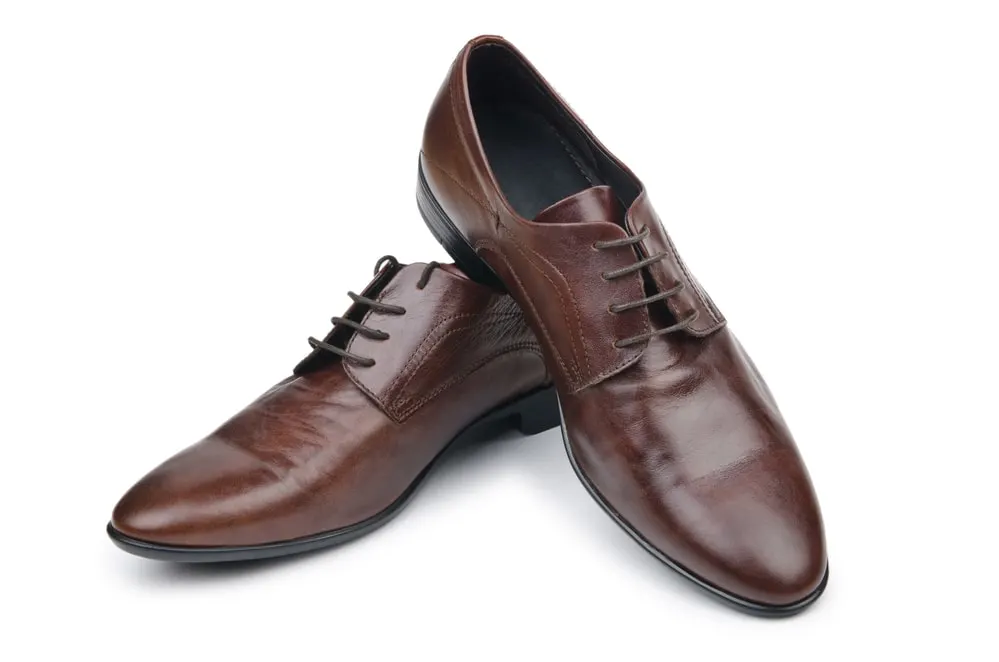
Add Contrast With A Pocket Square
Another great way to add a touch of contrast to the monochromatic combination would be to add a simple pocket square.
A navy suit and a blue shirt can be worn with a very wide range of pocket square colors, but it’s pretty likely that one or two would be the best options for your specific circumstances.
First and foremost, however, make sure a pocket square would be appropriate in the first place.
In general, avoid them in business-professional settings. It looks awkward, eccentric, and out of place.
In addition, pocket squares just look unprofessional in professional settings. They have more of a social feel to them.
When wearing a navy suit and a blue shirt to a smart-casual setting, on the other hand, a pocket square is a simple way to let people know you take style seriously.
Consider a neutral-colored pocket square (eg. white or grey) for a more subtle look.
If you’d prefer to add a touch of color, consider a color that’s analogous to blue – i.e, close to blue on the color wheel (eg. green or purple).
If you really want to go for a high-contrast look, consider an orange pocket square. Orange and blue are opposite each other on the color wheel and will catch the eye when combined.
It’s effective, but pretty attention-grabbing. So, stick to a dark and muted shade of orange such as burnt orange to avoid coming across as too flamboyant.
Frequently Asked Questions
Here are a couple of FAQs to finish up.
Can You Wear A Navy Suit And A Blue Shirt To A Wedding?
A navy suit can usually be worn with a light blue dress shirt when attending a wedding. However, a white dress shirt would usually be the more appropriate and traditional option.
Blue shirts aren’t commonly seen at weddings, but they wouldn’t usually be considered inappropriate or underdressing.
Overall, however, the safer option would be to simply go for a white shirt instead.
Can You Wear A Navy Suit And A Blue Shirt To A Funeral?
A navy suit can be worn with a blue shirt to most modern, Western funerals. However, it would usually be more appropriate to wear a white shirt in most instances.
The worst thing you can do at a funeral is stand out from the crowd. You want to wear something that signifies respect and subtlety.
A navy suit and white shirt would always do this. While black suits are considered more traditional, they aren’t usually considered necessary in this day and age.
A navy suit and a light blue shirt would usually be OK, but wouldn’t be the ideal choice.
When attending a funeral, avoid wearing a navy blue suit with a medium or dark blue shirt entirely. It would almost always come across as underdressing for the occasion.
Ready Sleek founder. Obsessed with casual style and the minimalist approach to building a highly functional wardrobe. Also a fan of classic, vintage hairstyles.

